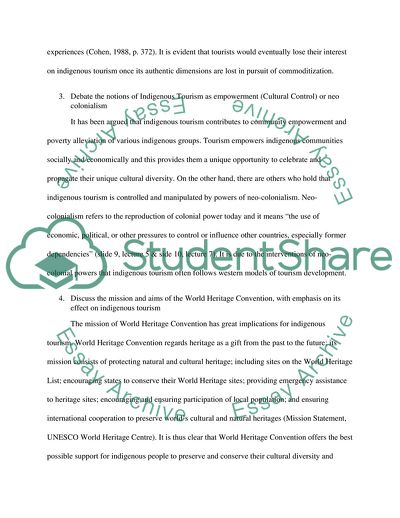Cite this document
(The Benefits of Tourism of Indigenous Communities Assignment Example | Topics and Well Written Essays - 2500 words, n.d.)
The Benefits of Tourism of Indigenous Communities Assignment Example | Topics and Well Written Essays - 2500 words. https://studentshare.org/tourism/1843920-exam-questions
The Benefits of Tourism of Indigenous Communities Assignment Example | Topics and Well Written Essays - 2500 words. https://studentshare.org/tourism/1843920-exam-questions
(The Benefits of Tourism of Indigenous Communities Assignment Example | Topics and Well Written Essays - 2500 Words)
The Benefits of Tourism of Indigenous Communities Assignment Example | Topics and Well Written Essays - 2500 Words. https://studentshare.org/tourism/1843920-exam-questions.
The Benefits of Tourism of Indigenous Communities Assignment Example | Topics and Well Written Essays - 2500 Words. https://studentshare.org/tourism/1843920-exam-questions.
“The Benefits of Tourism of Indigenous Communities Assignment Example | Topics and Well Written Essays - 2500 Words”. https://studentshare.org/tourism/1843920-exam-questions.


